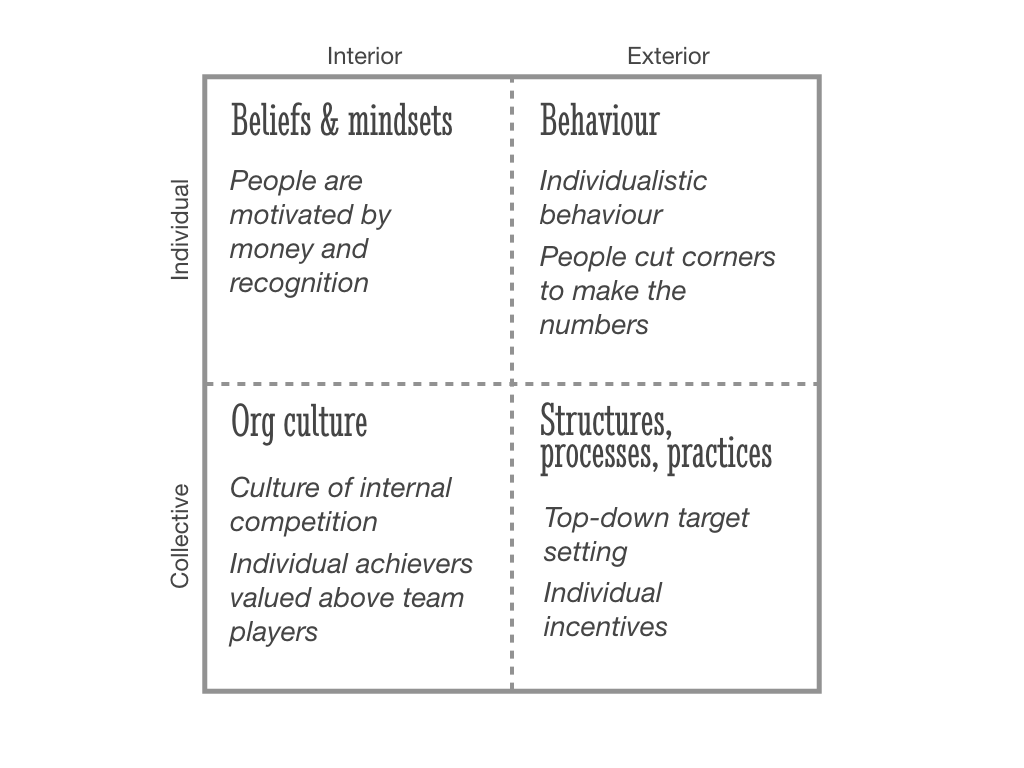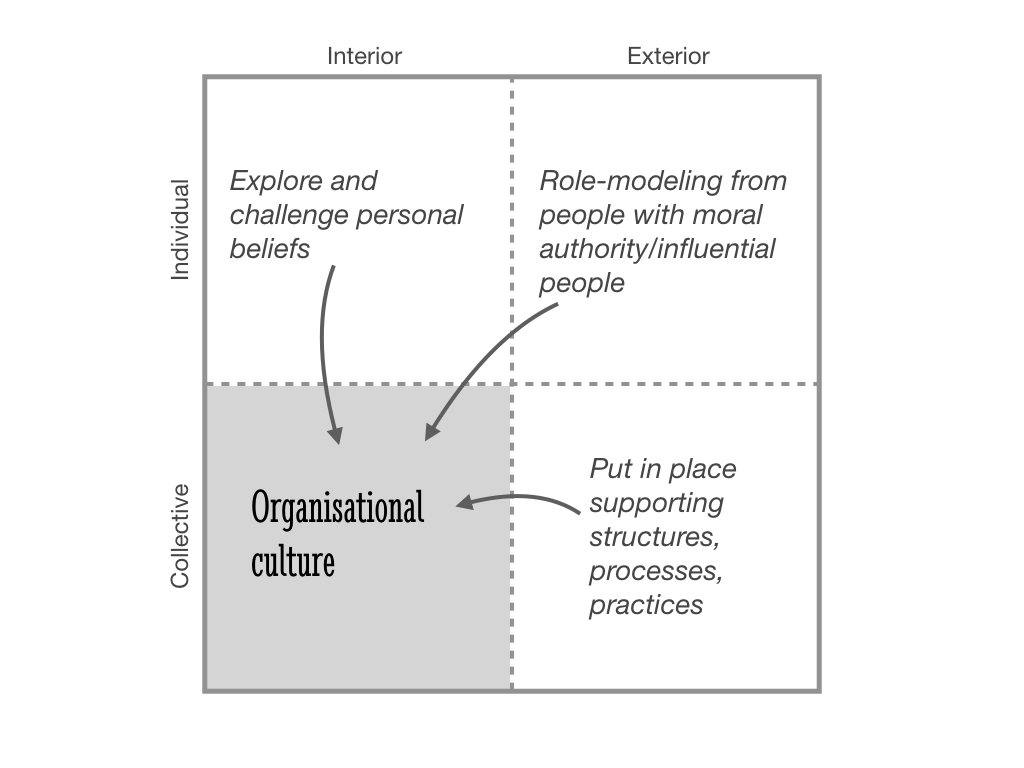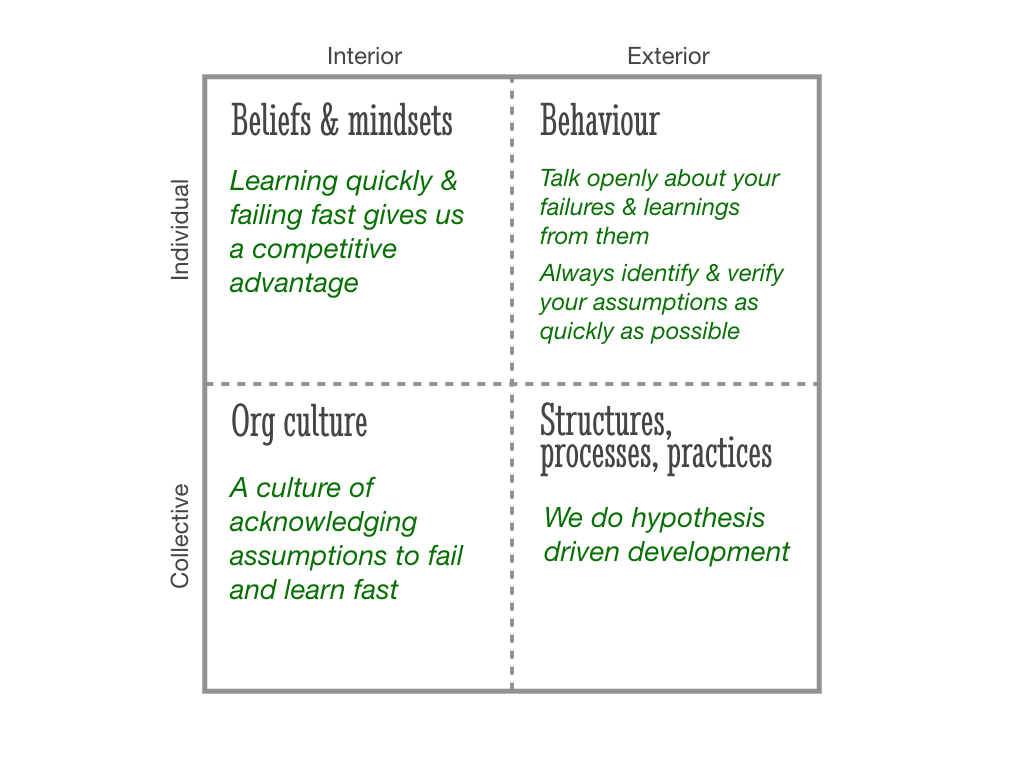I originally posted this article on Medium in Oct 2017
I also did a lightning talk about the subject at Agila Sverige in June 2018 (in Swedish)
Many organisations fail to achieve their business objectives because they do not consciously create an organisational culture that enables them to. The more an organisation’s culture is aligned with its purpose and context the greater its chances are to reach its goals.
I’ve developed an exercise based on Frederic Laloux’s take on Ken Wilber’s 4 quadrant model that helps organisations and teams concretise their current culture and consciously design new ones.
De-fluffy-tizing culture
Wilber’s model shows that culture is the result of its:
- People’s beliefs and mindsets
- People’s behaviour
- Structures, processes and practices throughout the organisation

In Wilber’s model the quadrants are integral (change in one area affects other areas) and you need to look at each quadrant both separately and holistically to fully understand what effects your decisions in each area have.
In Reinventing Organisations Frederic Laloux exemplifies this correlation. He describes an organisation with leaders that believe that people are motivated by money and recognition. The leaders creates structures for managing targets top down and create individual incentives. As a result people behave individualistically and cut corners to make the numbers.

Running the exercise
Because the quadrants are integral a small change in one area could have a profound effect on your culture so start by visualising your current culture and then look at the culture you need for your purpose and business objective.
Step by step
- Draw the 4 quadrant model in large size on a whiteboard.
- Ask the group to state their top business and organisation goals and write that on the whiteboard above the quadrant.
- Ask each participant to write down current and typical behaviours and structures in the organisation on individual post-it notes.
- Let everyone present their notes by asking them to put them up in their corresponding quadrant on the whiteboard.
- Ask if anyone would like to add anything.
- Do a reflection round where you discuss what the underlying mindsets and beliefs might be and visualise them in the top left quadrant.
- Get the group to reason about and visualise relations, cause and effect across the quadrants. During this stage you will likely find areas that are either supportive or impeding the organisation and its business goals.
- Ask the group to identify a plan of action to mitigate at least one impeding area and when they should meet again.

Concrete example
The following is an extract from Spotify that states what organisational culture we believe would be beneficial for us to adopt in our context and the in pursuit of our objectives.

Since I wrote this as a short guide to help people please let me know if you want me to elaborate on certain areas if you’d like to know more.
I’m also super excited to hear what insights you get from running this exercise in your context. Please share them and other feedback you might have in the comments.
I would like to thank Fiona Siseman, Kelly McCusker & Viktor Cessan for their time and help! Without them this article would not exist. I naturally profoundly appreciate the work of Ken Wilber and Frederic Laloux.
If you’re interested in getting more background and insights on the model I highly recommend you to read chapter 2.7 in Reinventing Organisations.
Thanks for reading and good luck if you decide to try! Reach out to me if you’d like a personal chat to help you prepare, I’d love to help out.